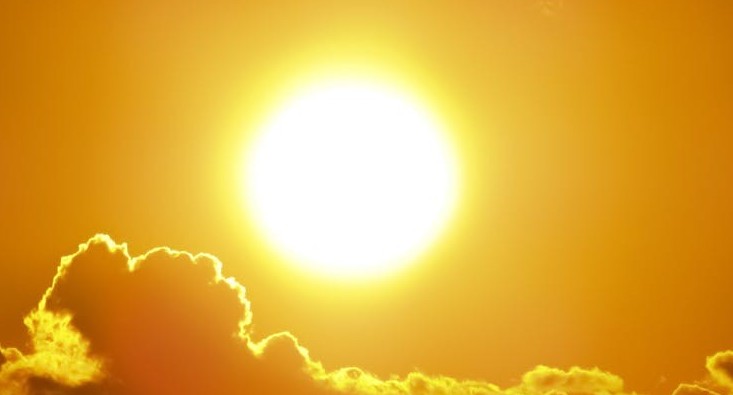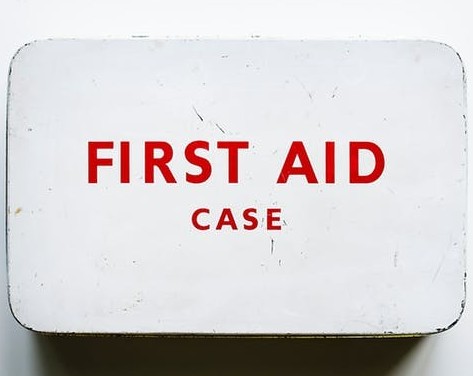The Centers for Disease Control and Prevention states the each year, over 600 people in the US alone die from complications brought on by extreme heat. They go on to say that number is greater than the number of deaths caused by tornadoes, hurricanes, flooding, lightning and all other weather events combined.

A heat wave is considered to be a period of abnormally and uncomfortably hot and humid weather. Generally it is a 5-day period of prolonged heat.
The elderly population is at greater risk for being affected by the heat. The elderly have more risk factors including potential functional and mental impairments that could limit fluid intake. It is important to know the difference between heat exhaustion vs. heat stroke and to know – what are the symptoms and what can you do?
The good news is that you can prevent illness or death from heat by being aware of the signs and symptoms of heat exhaustion and heat stroke and acting quickly when they occur.
What is the difference between heat exhaustion and heat Stroke?
Heat exhaustion comes prior to heat stroke and is a direct result of the body becoming overheated and experiencing heat stress. Some signs of heat exhaustion are:
- Heavy sweating
- Rapid pulse
- Dizziness
- Fatigue
- Cool, moist skin
- Muscle cramps
- Nausea
- Headache
 These symptoms may come on very quickly or be the result of cumulative heat exposure over a long period of time. When heat exhaustion is not taken care of heat stroke can be the result
These symptoms may come on very quickly or be the result of cumulative heat exposure over a long period of time. When heat exhaustion is not taken care of heat stroke can be the result
Heat stroke is a more severe heat related illness which, without treatment can lead to death. Heat stroke is the result of your core body temperature reaching 104 degrees or higher. Signs of heat stroke include:
- Throbbing headache
- Dizziness and light-headed ness
- Lack of sweat
- Red, hot, dry skin
- Cramps or muscle weakness
- Nausea and vomiting
- Rapid heart beat
- Rapid, shallow breathing
- Confusion
- Seizures
- Unconsciousness
Heat stroke can result in damage to the heart, brain, kidneys and muscles and ultimately it can lead to death. If you suspect someone is experiencing heatstroke (also known as sunstroke) you should consider it a medical emergency and call 911 immediately.
Refer to the chart at the bottom to this article created by the CDC for signs, symptoms and treatment tips.
Risk Factors for Heat Stroke
Some factors that contribute to a person being more likely to suffer from a heat related illness are age, living conditions, chronically ill, and those who don’t drink enough water and socio-economic factors.
The elderly are at greater risk due to many physiological changes. The elderly body does not adjust as quickly to changes in temperature in large part due to decreased sweat production and less optimal blood flow. The elderly are also likely to suffer from multiple health issues and/or take multiple medications that add additional stressors to the body’s ability to handle heat.
Chronically ill people also have difficulty handling heat. The body is already accommodating for stressors and temperature adjustment is slower and many times medications can play a part int he body’s ability to handle heat as well. The health conditions that increase risk for heat stroke include, heart, lung or kidney disease, obesity or underweight, high blood pressure, diabetes, mental illness, sickle cell train, alcoholism, sunburn or any other conditions that cause a fever.
People living in top floor apartments or housing with poor ventilation and/or no air conditioning are at greater risk for suffering heat related illnesses. Also, at risk are infants and young children, outside workers, athletes and pets.
Those in urban areas are also more prone to heat stroke. The air does not circulate well in some urban areas creating poor air quality. And asphalt and concrete store heat during the day which is then released during the night causing nighttime temperatures to remain high.
The heat index is directly related to heat stroke. When relative humidity reaches 60% or higher it is harder for sweat to evaporate and therefore harder for the body to cool down. When the heat index reaches 90 degrees or more the risk of heat related illnesses increases drastically.
First Aid

When you suspect someone is suffering from heat exhaustion remove them from the heat and sun. Call 911 for quick emergency intervention. If possible get them into an air-conditioned area. If not, then find a nice shay spot. Cool them down by wetting the skin and fanning them and use ice applied to the armpits, neck and groin. A cool tub or shower is ideal and plenty of cold water to drink. Your goal is to bring down the body’s core temperature.
Heat Stroke Prevention
When the heat index is going to be high, try to stay inside in a cool environment. If you do need to spend time outside make sure to wear lightweight, light colored and loose fitting clothes. Wear a hat to shade your face. Use sunscreen, Drink water – more than you think you need to, and consider electrolyte – rich sports drinks to help replace the salt lost from sweat and avoid alcohol.
Close the shades in your house during the hottest times of day and run a fan for air circulation inside your house. Open the windows at night when it cools down to create more air flow.
If you plan to work or exercise outside during high heat make sure to hydrate prior to, during and after the time you are outside.
Reschedule or cancel your outside events or activities when possible. It is a good idea to shift your plans to morning or evening when the temperatures are cooler and the sun isn’t as hot.
Conculsion
The good news is that heat related illnesses are completely preventable. Stay informed on the weather conditions during times you will be outside. Have an awareness of your own heat tolerance and make a plan to stay cool and hydrated. If you do experience any of the signs or symptoms of heat exhaustion or heat stroke be sure to take them seriously and get assistance to cool down as quickly as possible.
Remember the risk factors outlined above and take extra care to check on your older, friends, relatives and neighbors during a period of prolonged heat.



